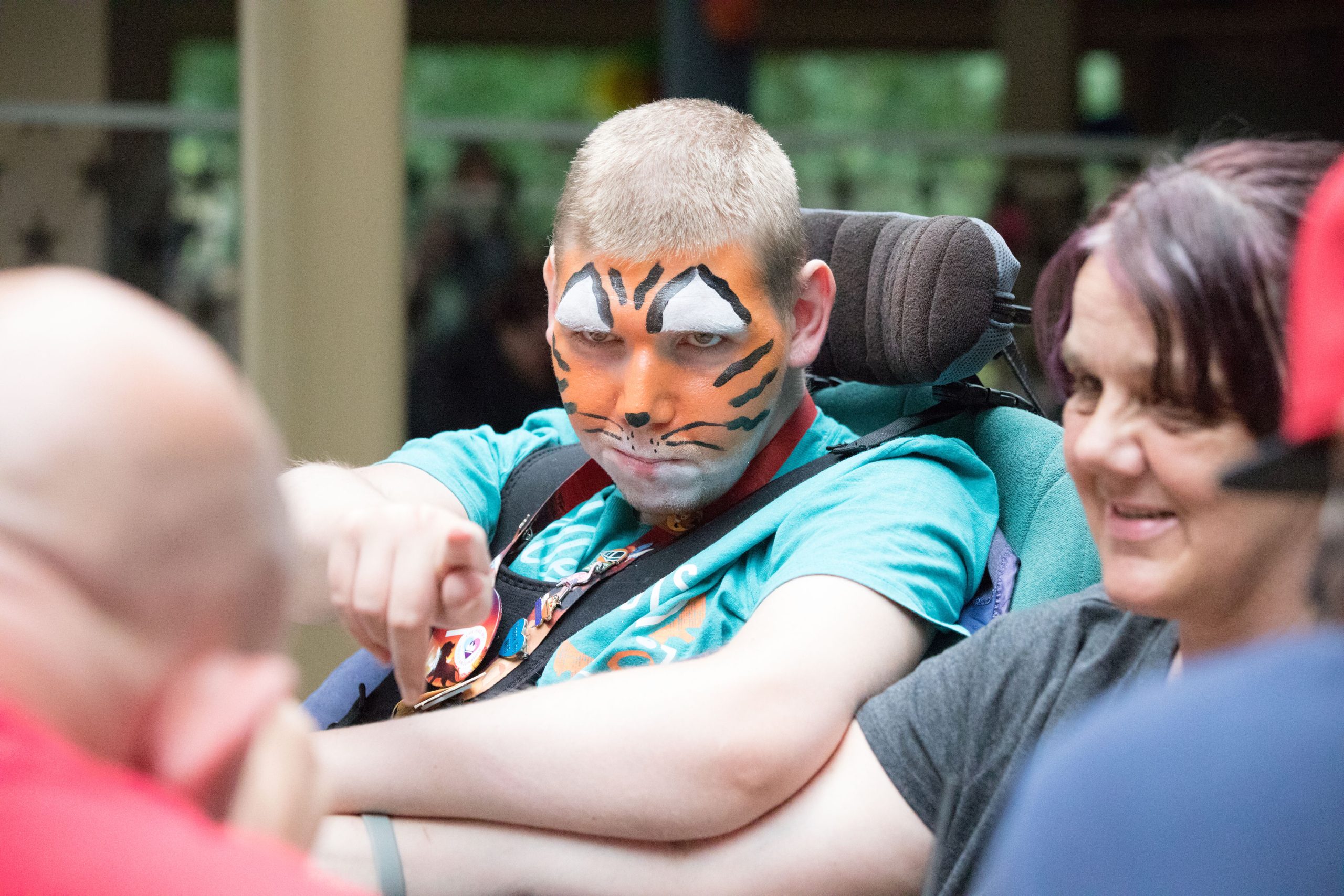
Seizures
Discover more about seizures, a sudden burst of electrical activity in the brain that temporarily affect how it works.
Dravet Syndrome is a clinical diagnosis. This means it’s diagnosed from reported signs and symptoms, rather than diagnostic tests.
However, diagnosing Dravet Syndrome from signs and symptoms alone is not always straightforward. Some symptoms are shared with other types of epilepsy, and others can take several years to be noticeable.
The good news is that there is a genetic test available that can help confirm a Dravet Syndrome diagnosis. Today, a genetic test, together with a clinical history (a record of when seizures and other symptoms occurred) means doctors can diagnose Dravet Syndrome with a high degree of accuracy.
Healthcare professionals who are not familiar with Dravet Syndrome can find out more about diagnosing the condition here.
A child with Dravet Syndrome will usually have their first seizure when they are between three to nine months old, with an average of around six months of age. Rare cases can happen as early as one month old, or as late as 20 months. Before the first seizure, a child will probably have been developing normally.
The first seizure might be:
Find out about more about initial seizures in Dravet Syndrome.
Dravet Syndrome is not just epilepsy. It also includes a spectrum of conditions (or ‘comorbidities’) that become noticeable in early childhood. Initial development appears normal, but then it will start to slow. For example, a child might walk a little later (around 17 to 18 months of age) and take longer to speak.
Around 50% of children with Dravet Syndrome, who are between one and four years old, will have an abnormal EEG.
During the second year of life seizures become more frequent and persistent. They may happen with or without a fever, and at any time of day and night.
They can include: myoclonic seizures, focal impaired awareness seizures, atypical absence seizures, atonic seizures.
Visit the seizures section of our website to find out more about patterns of seizures in early and later childhood.
Generally, as children get older, typically around four years of age, status seizures begin to settle. However, people with Dravet Syndrome remain prone to status seizures, particularly when they are ill or have an infection.
Another change is that children may begin to experience their seizures at night (‘nocturnal seizures’), particularly as they transition through nightly sleep phases.
During the first 10 years of their lives, a child with Dravet Syndrome will experience a huge number of seizures – in some cases averaging 50 to 100 per day. These include:
The child will have less ‘convulsive status epilepticus seizures’. ‘Status epilepticus’ is either an individual seizure that lasts longer than five minutes, or a cluster of them that happen close together, without recovery time in-between.
The number of big tonic clonic seizures have changed as my daughter has got older. She still has lots of small myoclonic seizures – around 30-40 per day, an improvement from up to 100 a day. They cause her to fall over or drop whatever she is doing.Mum to a 6 year old living with Dravet Syndrome
If a child is living with Dravet Syndrome, varying degrees of ‘developmental delay’ will become noticeable between the ages of two and four. The term ‘developmental delay’ is used when a child takes longer to reach certain development milestones than others of their age. These milestones cover four areas – motor (or movement) skills, speech and language, cognitive skills and social/emotional skills. A child has Global Developmental Delay (GDD) if they haven’t reached two or more milestones in all areas of development.
In Dravet Syndrome, development generally continues to be impaired – some early skills and abilities may be lost, and the comparative gaps with neurotypical peers continue to widen throughout childhood.
All children and adults living with Dravet Syndrome therefore have some degree of intellectual (or learning) disability, ranging from moderate to severe. In addition, they may develop other associated conditions, such as autism, ADHD and challenging behaviour, and difficulties with mobility, speech, eating and sleep. These can become apparent in early childhood, and continue to evolve as a child grows into adulthood.
You can find out more about these in our non-seizure aspects of Dravet Syndrome section.
Dravet Syndrome is a life-long condition. The early signs and symptoms of the condition might be lost from someone’s medical history or they may have been misdiagnosed. An adult who has intellectual disability and epilepsy may have Dravet Syndrome, which could be diagnosed by a genetic test.
If you suspect someone you know or care for could have Dravet Syndrome, share our ‘Could it be Dravet?’ diagnosis guide for healthcare professionals with their medical team.
My son was given a clinical diagnosis of Dravet Syndrome at the age of 36. Our biggest regret was not having a diagnosis of Dravet Syndrome sooner which would then have allowed us to target specific drugs identified specifically for Dravet.Parent of an adult with Dravet Syndrome
If you’re concerned that someone you know might have Dravet Syndrome, speak to a doctor without delay. Any child with suspected Dravet Syndrome should be assessed by a paediatrician with expertise in epilepsy, or a child neurologist.
As Dravet Syndrome is a life-long condition, a diagnosis can be beneficial at any age. Ask the health professional involved in your child or adult’s care, to carry out a genetic test for Dravet Syndrome.
Healthcare professionals who are not familiar with Dravet Syndrome can find out more about diagnosing the condition here.

Discover more about seizures, a sudden burst of electrical activity in the brain that temporarily affect how it works.

Dravet Syndrome is not ‘just’ seizures. Comorbidities is a medical term used to describe the non-seizure aspects of Dravet Syndrome. Find out more here.

Find out what treatments are available to manage Dravet Syndrome.

Discover the benefits of getting tested for genes that can cause Dravet Syndrome and what is involved.